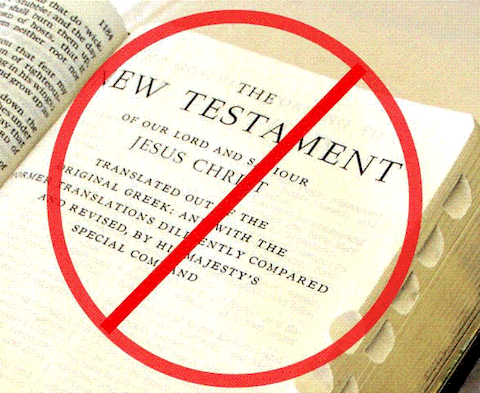
1001 Errors in the Christian Bible
Home
Dedication
Matthew
Mark
Luke
John
Acts
Contact Us
Mark -- Errors 266-272
#266
Mark 15: (KJV)
39 “And when the centurion, which stood over against him, saw
that he so cried out, and gave up the ghost, he said, Truly this man was
the Son of God.”
There is no “the” in the Greek of “the Son of God”
above. Most modern Christian translations add “the”. Apologists
ignore that when the definite article is not intended it is never used
and they argue, using arguable examples, that when the Greek “the”
is not used it can be implied by the context, so they argue that “Mark’s”
context implies it. Having a description of Jesus by a Roman soldier as
just another son of God hero in a time of many son of God heroes is within
Mark’s context. Also, Mark’s verse 39 makes no sense as the
soldier proclaims that Jesus was a son of God because Jesus cried out
and died. Also note that “Mark” uses the past tense to describe
Jesus, “was” a son of God. Did the author intend to communicate
that Jesus’ career ended on the cross? Maybe.
#267
Mark 16: (KJV)
1 “And when the sabbath was past, Mary Magdalene, and Mary the
mother of James, and Salome, had bought sweet spices, that they might
come and anoint him.”
Compare to Matthew 28: (KJV)
1 “In the end of the sabbath, as it began to dawn toward the first
day of the week, came Mary Magdalene and the other Mary to see the sepulchre.”
“Mark” indicates that the Sabbath was over and it was already
a new day. The Greek of “Matthew” indicates it was late in the
Sabbath and the son had not yet risen. Christian commentators fumble with
the difference here and the corresponding proper mistranslations. All
you have to do though to get a logical explanation for the difference
is drop your illogical assumption that “Matthew” is presenting
history. Matthew copied from Mark but felt he could make an improvement
in the story by showing the son was rising while the son was rising.
#268
Mark 16: (KJV)
1 “And when the sabbath was past, Mary Magdalene, and Mary the
mother of James, and Salome, had bought sweet spices, that they might
come and anoint him.”
Compare to Matthew 28: (KJV)
1 “In the end of the sabbath, as it began to dawn toward the first
day of the week, came Mary Magdalene and the other Mary to see the sepulchre.”
Mark says the visitors were Mary, Mary and Salome while Matthew says Mary,
Mary. Quite contrary.
#269
Mark 16: (KJV)
1 “And when the sabbath was past, Mary Magdalene, and Mary the
mother of James, and Salome, had bought sweet spices, that they might
come and anoint him.”
Compare to Matthew 28: (KJV)
1 “In the end of the sabbath, as it began to dawn toward the first
day of the week, came Mary Magdalene and the other Mary to see the sepulchre.”
According to Mark the women came to anoint Jesus. According to Matthew
they just came to visit.
#270
Mark 16: (KJV)
3 “And they said among themselves, Who shall roll us away the
stone from the door of the sepulchre?”
Compare to Matthew 27: (KJV)
65 “Pilate said unto them, Ye have a watch: go your way, make
it as sure as ye can.
66 so they went, and made the sepulchre sure, sealing the stone, and setting
a watch.”
Matthew sez there was a guard at the tomb. Mark doesn’t mention any
guard. So Mark let his guard down.
#271
Mark 16: (KJV)
5 “And entering into the sepulchre, they saw a young man sitting
on the right side, clothed in a long white garment; and they were affrighted.”
Compare to Matthew 28: (KJV)
2 “And, behold, there was a great earthquake: for the angel of
the Lord descended from heaven, and came and rolled back the stone from
the door, and sat upon it.”
Mark sez it was a young man. Matthew sez it was an angel. Note how Matthew
keeps adding supernatural items to Mark’s story (Matthew adds guard,
earthquake, angel and as Gene Wilder said in the classic “Young Frankenstein”,
etc, etc, etc,). Interestingly, Mark’s account here is responsible
for the saying, “who was that young man?”.
#272
Mark 16: (KJV)
5 “And entering into the sepulchre, they saw a young man sitting
on the right side, clothed in a long white garment; and they were affrighted.”
Compare to Matthew 28: (KJV)
2 “And, behold, there was a great earthquake: for the angel of
the Lord descended from heaven, and came and rolled back the stone from
the door, and sat upon it.”
Mark sez the young man sat inside the tomb while Matthew sez the angel
sat on the stone.